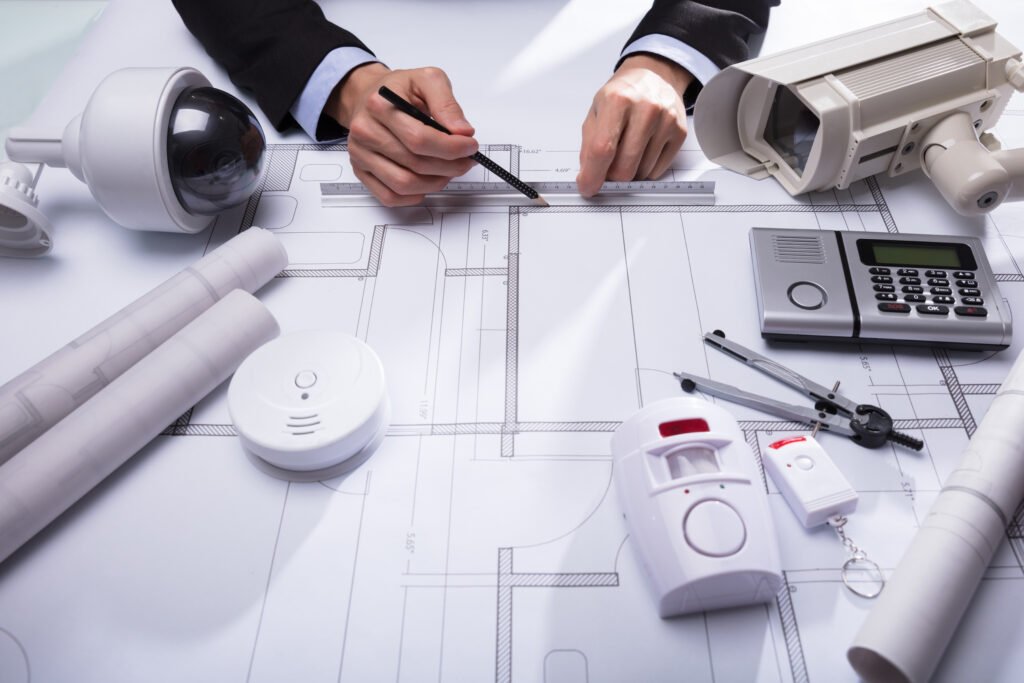Security Design Engineer

What is a Security Design Engineer?
As part of a team of fire and security engineers, a design engineer plays a pivotal role in developing and implementing protective design solutions to mitigate security risks. These professionals are tasked with creating systems that safeguard buildings, assets, and individuals from potential threats. The security engineer must understand security objectives, develop security strategies, and ensure compliance with industry standards. They work closely with design teams to integrate security measures into architectural plans, making security an intrinsic part of the design process.
Key Responsibilities
The key responsibilities of a design engineer include assessing security risks, identifying vulnerabilities, and designing robust security systems. They must ensure that the security design aligns with the client’s needs and complies with relevant regulations. Other essential tasks include:
- Developing detailed security plans and specifications
- Coordinating with other engineers and architects
- Conducting risk assessments and site evaluations
- Overseeing the installation and implementation of security systems
- Ensuring ongoing maintenance and upgrades of security measures
Understanding Security Risks
Security risks vary widely depending on the environment and the specific needs of the client. They can range from physical threats, such as break-ins and vandalism, to other threats, including hacking and data breaches. A comprehensive understanding of these risks is crucial for a security design engineer to develop effective strategies to mitigate them.
Developing Security Strategies
To protect against security risks, engineers must develop and implement security strategies tailored to the specific vulnerabilities of a site. These strategies may involve electronic security measures, access control systems, and physical barriers. The goal is to create a multi-layered defence that addresses both current and emerging threats.
Setting Security Objectives
Security objectives guide the design and implementation of security measures. These objectives typically include protecting assets, ensuring the safety of personnel, and maintaining the integrity of information systems. By setting clear security objectives, engineers can focus their efforts on achieving specific outcomes that align with the client’s needs and regulatory requirements.
Risk Mitigation Techniques
Risk mitigation is a core component of a security design engineer’s role. This involves identifying potential threats and vulnerabilities, assessing the likelihood and impact of these risks, and implementing measures to reduce them. Techniques may include installing surveillance cameras, reinforcing physical barriers, and implementing cybersecurity protocols.
Importance of Compliance
Compliance with industry standards and regulations is critical in security design. Engineers must ensure that their designs meet all legal requirements and best practices. This includes adhering to guidelines set by organisations such as the International Organisation for Standardisation (ISO) and local regulatory bodies.
The Role of Technology in Security Design
Technology plays a crucial role in modern security design. Advances in software and electronic security systems have enabled more sophisticated and effective security solutions. Security design engineers must stay abreast of these technological developments to provide cutting-edge solutions for their clients.
The Design Process
The design process for security systems involves several stages, including:
Initial Assessment: Understanding the client’s needs and evaluating the site for potential vulnerabilities.
Design Development: Creating detailed plans and specifications for the security system.
Implementation: Overseeing the installation of security measures and ensuring they function as intended.
Maintenance and Upgrades: Providing ongoing support to ensure the security system remains effective over time.
Collaborating with the Design Team
Effective collaboration with the design team is essential for integrating security measures into the overall architectural design. This ensures that security is not an afterthought but a fundamental aspect of the building’s design. Security design engineers work closely with architects, structural engineers, and other stakeholders to achieve this integration.
Career Opportunities and Average Salary
The demand for security design engineers is growing, with opportunities available in various sectors, including government, commercial, and residential projects. The average salary for a design engineer in the UK is competitive, reflecting the specialised skills and expertise required for the role. Salaries can vary based on experience, location, and the specific demands of the job.
Required Qualifications and Skills
To become a security engineer, a degree in engineering, architecture, or a related field is typically required. Professional certifications, such as those offered by the Security Industry Authority (SIA) in the UK, can also enhance career prospects. Key skills include:
- Strong analytical and problem-solving abilities
- Proficiency in security-related software
- Excellent communication and teamwork skills
- In-depth knowledge of security systems and technologies
Protective Design Solutions
Protective design solutions are tailored to the specific needs of each project. These solutions may include physical barriers, electronic security systems, and procedural measures designed to enhance security. By combining various approaches, security design engineers can create comprehensive protection plans that address multiple types of threats.
The Importance of Ongoing Professional Development
The field of security design is constantly evolving, with new threats and technologies emerging regularly. Security design engineers must commit to ongoing professional development to stay current with industry trends and maintain their expertise. This can involve attending workshops, pursuing advanced certifications, and participating in professional organisations.
Conclusion
The role of a security design engineer is both challenging and rewarding, requiring a blend of technical expertise, creativity, and strategic thinking. By understanding security risks, developing robust strategies, and implementing effective solutions, these professionals play a crucial role in protecting people and assets. With a growing demand for skilled security design engineers, there are ample opportunities for those looking to enter this dynamic field.
Every Job is Easier if You Have the Right Tools
